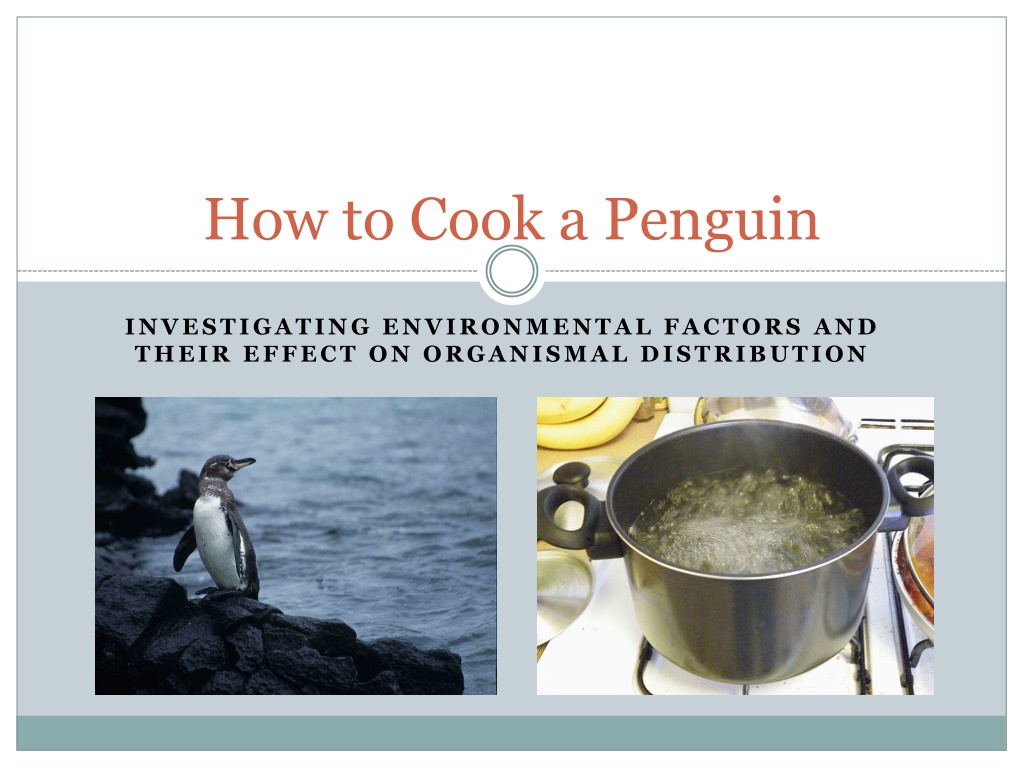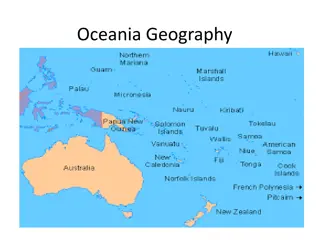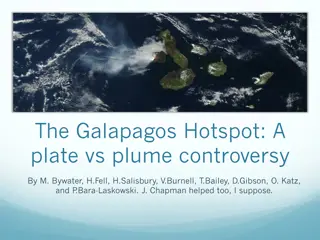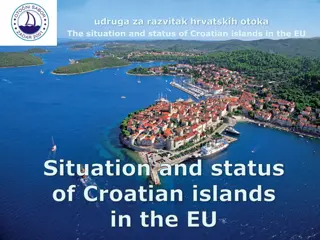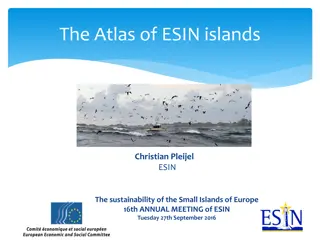Investigating Environmental Factors and Penguin Distribution in the Galapagos Islands
Galapagos penguins have adapted to survive in a tropical climate by utilizing unique environmental factors and behaviors. The Humboldt and Cromwell currents play a crucial role in shaping the habitat and distribution of these endangered penguins on the Galapagos Islands.
Download Presentation

Please find below an Image/Link to download the presentation.
The content on the website is provided AS IS for your information and personal use only. It may not be sold, licensed, or shared on other websites without obtaining consent from the author. Download presentation by click this link. If you encounter any issues during the download, it is possible that the publisher has removed the file from their server.
E N D
Presentation Transcript
How to Cook a Penguin INVESTIGATING ENVIRONMENTAL FACTORS AND THEIR EFFECT ON ORGANISMAL DISTRIBUTION
Galapagos Islands The Galapagos Islands is a volcanic archipelago (island chain) located 500 miles off the coast of Ecuador on the equatorial boundary. The Galapagos, made famous by Charles Darwin, compromises 18 main islands with Isabela and Fernandina as two of the largest and most western islands of the archipelago. The unique positioning of the Galapagos falls between several important ocean current convergences that greatly affect the environment and habitat of the species there.
Galapagos Penguins Galapagos penguins (Spheniscus mendiculus) are an endangered species of penguin living on the Galapagos Islands. They have adapted to the climate of the Galapagos due to unique environmental factors as well as slight behavior modifications that allow them to survive and reproduce in a relatively tropical climate. 90% of the population is restricted to the islands of Isabela and Fernandina. They primarily stay in the water during the day to feed and assume normal activity, while they inhabit the dry land at night seeking shelter in rocky crevices and outcrops along the coastline. They evolved adaptive behaviors of panting and shielding their feet with flippers to cool off and reduce heat loss on land when sun is still exposed.
Humboldt and Cromwell Currents The Humboldt or Peru Current brings cold chilling waters from the South Pole to the southern portion of the island chain. The Cromwell or Equatorial Undercurrent is an eastern traveling upwelling current that brings cold, nutrient-rich waters to the western islands of the Galapagos.
Humboldt and Cromwell Currents Galapagos Penguin Distribution CROMWELL EQUATORIAL COUNTER CURRENT HUMBOLDT/PERU CURRENT
Picture Resources Galapagos Islands Penguin distribution map- CC by SA 3.0- Strebe (http://en.wikipedia.org/wiki/Galapagos_penguin#mediaviewer/File:Galapagos _Penguin.png) Modified by D. Gardner World Map handout- CC by SA 3.0 (http://en.wikipedia.org/wiki/Equirectangular_projection#mediaviewer/File:Eq uirectangular_projection_SW.jpg) Galapagos Island Map- CC by SA 2.5- freeworldmaps.net (http://simple.wikipedia.org/wiki/Gal%C3%A1pagos_Islands#mediaviewer/File: Galapagos%2Bmap.jpg) Galapagos Penguin (Title Slide)- Flickr: Gal pagos Penguin (Spheniscus mendiculus), Gal pagos Islands, Ecuador Galapagos Penguin (Info Slide)- CC by SA 2.0-Flickr (http://en.wikipedia.org/wiki/Galapagos_penguin#mediaviewer/File:Galapagos _penguin_(Spheniscus_mendiculus)_-Isabela2.jpg) Boiling Water (Title Slide)-CC by SA 3.0 Unported-Free Software Foundation (GNU Free Documentation license) (http://commons.wikimedia.org/wiki/File:Boiling_water.jpg) Ocean Currents World Map- Public Domain (http://skyblue.utb.edu/paullgj/geog3333/lectures/oceancurrents-1.gif)
